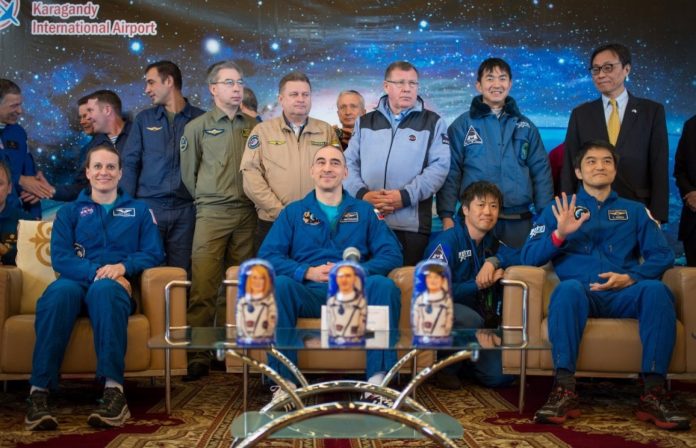
This is the scene when an astronaut sees Earth up close for the first time in almost four months.
Russian cosmonaut Anatoly Ivanishin slid out of the Soyuz MS-01 spacecraft that delivered him to a remote steppe in Kazakhstan Sunday morning (local time). He and fellow astronauts Kate Rubins of NASA and Takuya Onishi of the Japanese Aerospace Exploration Agency arrived safely after a three-and-a-half-hour journey from the International Space Station – and 115 days in space.
“I’m kind of reluctant to close the hatch,” Ivanishin said during a ceremony on Friday when he handed command of the space station to U.S. astronaut Shane Kimbrough. “The time is very special here. … I didn’t have time to know what’s going on our planet, and maybe it’s for the better. On the space station, you live in a very friendly, very good environment.”
The next day, he, Rubins and Onishi clambered into the tiny Soyuz descent module for their trip home. Its quarters are very tight.
As the Soyuz rocketed toward Earth, search and rescue helicopters fanned out around the landing site, waiting for the craft to come into view.
Just before 10 a.m. local time, the Soyuz deployed its parachute and drifted out of the morning sky.
After it hit the ground, rescuers opened the hatch and helped extract crew members via ladders and slides. The craft landed upright, which made the process quicker then when a craft lands on its side.
After several months in microgravity, the astronauts must adjust to having weight again. The three were carried around and confined to wheelchairs while their bodies began to remember what it’s like to feel the pull of Earth’s gravity.
Rubins, who has a degree in molecular biology, became the first person to sequence DNA on the ISS in the summer – demonstrating that it’s possible to examine the genetic material of living organisms while in space. That’s important for researchers who are seeking to understand how space travel might affect astronauts’s DNA. Such sequencing in space also makes it easier for scientists to diagnose a bacterial infection or identify a microbial threat on the space station.
Rubins performed two spacewalks, an experience she told NPR was “more awesome, amazing and terrifying than you can possibly imagine.”
(c) 2016, The Washington Post · Sarah Kaplan
{Matzav.com}











